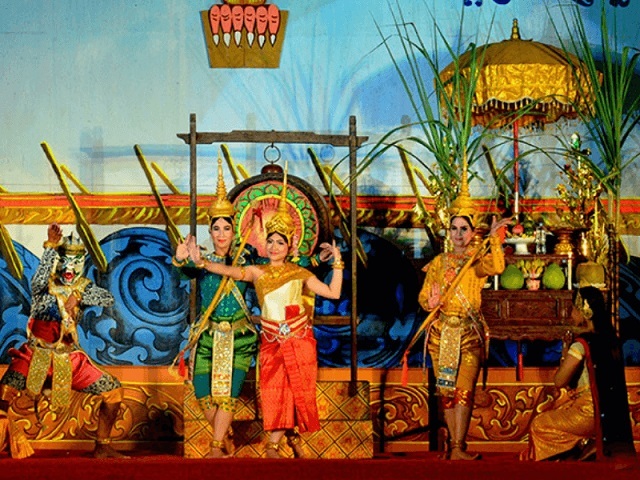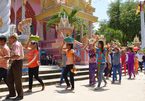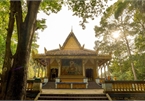 |
|
|
With a total population of 1.3 million, the Khmer are primarily found in the country's southwest regions and Ho Chi Minh city.
In 1997, there were 3,882 Khmer residents in Ho Chi Minh City; by 2015, the population had risen to 25,000, despite the fact that they were dispersed around the city but largely concentrated in one location near the Nhieu Loc and Thi Nghe waterways, Chantarangay Pagoda in Ward 7, District 3 and Pothivong Pagoda in Ward 10, Tan Binh district.
The pagodas and monks play a significant role in many Khmer festivals since they are the focus of community activities and the repository of Khmer culture. The following are world-renowned celebrations:
Numerous festivals are celebrated by Cambodians, and pagodas and monks play a prominent part because they serve as the hub of community life and the repository of Khmer culture. Among the most well-known celebrations are:
1. Meak Bochia Ceremony (Promulgating the Teachings of the Buddha)
2. Ban Chol Chnam Thmay Event (the traditional New Year holiday, the main festival of the year for the Khmer people)
3. Bochia Visac Ceremonies (Buddha day)
4. Ban Chol Vossa Festival, which marks the beginning of summer
5. A ritual for honoring grandparents, known as Dolta, is performed at the Dolta ceremony
6. Ban Chenh Vossa Festival, which marks the end of summer
7. Kathanh Tean Baptism Ceremony
8. Ok Om Bok ceremony (the Moon Offering ceremony).
There are two major Khmer beliefs – worshiping Neak Ta, the god of protection, and Arak, the god of rebirth (ie the god of the family). Other gods include Sun God, Moon God, and the worship of ancestors.
When there is a festival, whether great or small, the temple monks and ceremony leaders must strictly carry out eight rituals.
Cultural and creative activities of Khmer people in Ho Chi Minh City are discussed after festivals and beliefs. Dances like Rom Vong, Lam Luu, Saravan, and Seydam drum dances are examples of folkloric styles that follow different time signatures.
There are also musical instruments to accompany the dances, such as the Phêng pinpet percussion set (i.e. the five-tone orchestra), the Rônek ek musical instrument (with 21 separate bamboo sticks), the Rônek Thung musical instrument (with 16 wooden sticks), the Rônek musical instrument. dek (with 21 iron bars), the Cuong thum and Cuong Tuot musical instruments
The Khmer people, a long-lived ethnic group in the Southern region, have rituals and beliefs that derived from old working life that have become profoundly ingrained in their culture. Regardless of how far the times have traveled, they are still connected to the original consciousness.
Two temples in Ward 7, District 3, and Ward 10, Tan Binh, are the main hubs for Khmer festival events in Ho Chi Minh City.
Hong Nhung

Sen Dolta Festival: Khmer grateful to their benefactors
Sen Dolta is one of the rituals that shows the Khmer’s deep gratitude to ancestors, grandparents and parents, praying for dead people and asking good luck for living people.

Most beautiful Khmer pagodas in Soc Trang
The Mekong Delta Province of Soc Trang has hundreds of Khmer pagodas, but the Mahatup, Sa Lon and Day Om Pu pagodas are considered the most beautiful.